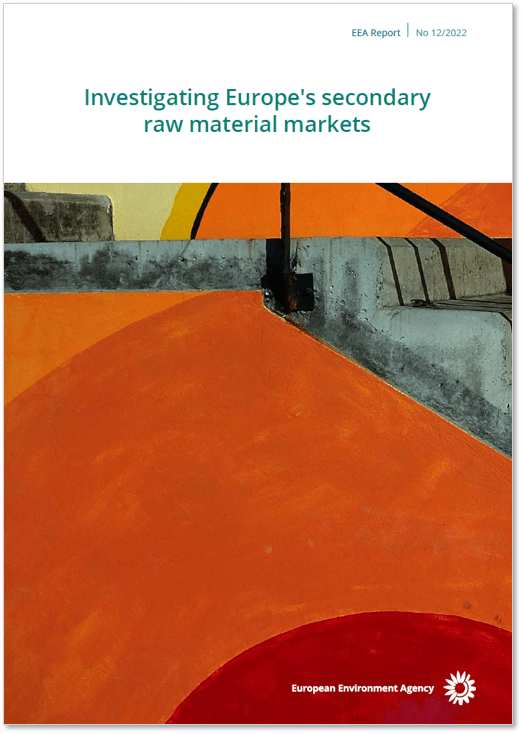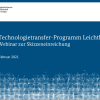
Investigating Europe’s secondary raw material markets
Key Messages
- Secondary raw material (SRM) markets are key to delivering a circular economy in the EU. These markets can ensure the timely circulation of good‑quality recycled materials in the European economy, which minimises the need to extract natural resources as a result.
- This report develops a new framework for assessing SRM market functionality. Of the eight SRM markets assessed under this framework, only three are well‑functioning (aluminium, paper and glass). These markets were established a long time ago, are international and open, and occupy a significant market share of their respective material supply.
- Five assessed SRM markets (wood, plastics, biowaste, aggregates from construction and demolition waste, and textiles) are not well‑functioning. The main reasons are their small size, weak demand (even with increasing supply) and inadequate technical specifications.
- Despite the strong policy push to increase recycling and the steady supply of recyclates that has resulted from this, the supply side of SRM markets is challenged. The main problems are insufficient specifications such as the end‑of‑waste criteria, and the presence of hazardous substances in recycled materials. The demand side, on the other hand, is characterised by a lack of trust in SRMs. There is hesitance to invest in technologies that would integrate SRMs into raw material supply operations.
- A cross-cutting issue impacting market functionality is the lack of adequate information for interested stakeholders, and the absence of a monitoring mechanism to observe the market and propose improvements.
- There are a few pathways to help SRM markets function more smoothly. These include expanding or modifying existing policy tools at the EU level; for example, by including fee eco-modulation in extended producer responsibility schemes. Otherwise, pathways include extending the use of green public procurement; making recycling targets more effective or expanding them to more waste materials; further developing end-of waste criteria; and widening the scope of recycled content requirements.
- Entirely new policy measures also help. For instance, further developing harmonised, EU-wide technical standards for SRMs could be beneficial. It would also be helpful to create a level playing field for primary and secondary raw materials by considering environmental externalities through taxing primary raw materials or reducing the VAT on SRMs.
Executive Summary
Secondary raw material (SRM) markets are crucial for a circular economy. This is because SRMs enable recyclables to re-enter the production value chain, which reduces dependency on primary resources as a result. This role is acknowledged in the EU circular economy action plan of 2020. However, if policy is to help establish or further develop such markets, we need to better understand the currently-fragmented SRM markets in the EU.
This report develops an assessment framework to describe the functionality of existing SRM markets. Applying the framework to selected SRM markets reveals specific reasons that explain why certain markets are functioning sub-optimally. The report also describes barriers preventing markets from reaching their full potential from a value chain perspective. Lastly, this report identifies potential measures that could effectively support SRM markets in the EU.
The SRM assessment framework is a criteria-based taxonomy for defining ′well-functioning′ secondary markets. A well-functioning secondary market has:
- a significant share of the total market for that material
(including the primary material market);
- representative prices properly reflecting demand-supply interactions;
- international or a wide scope of transactions;
- adequate economic drivers, even without support from
(waste) policy;
- robust industrial capacity for recycling; • good availability of market information;
- good product standardisation.
These criteria are applied to eight common SRM markets that are targeted by EU waste policy with the aim of improving their recycling (both qualitatively and quantitatively). Therefore, how these SRM markets function is very relevant to policy. The selected materials are:
- aluminium;
- paper and cardboard;
- wood;
- glass;
- plastics;
- textiles;
- construction and demolition aggregate waste
The ′maturity′ of an SRM market is decisive in determining its functionality. More specifically, its size and material quality (from the industrial use point of view) play the most important roles. The well-functioning markets identified — namely, aluminium, paper and cardboard, and glass — can be models for less well-functioning markets.
All SRM markets could potentially benefit from the lifting of specific regulatory, economic or technical barriers that arise at different stages of the SRM value chain. Different barriers — regulation and legislation, technology and quality, industrial capacity/investments, economic factors (prices, costs, information, etc.), competition from energy use — are encountered across the value chain of various SRM markets






Investigating Europe’s secondary raw material markets 0 reviews
Login to Write Your ReviewThere are no reviews yet.